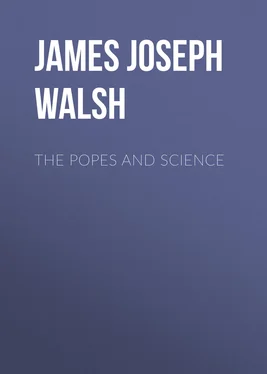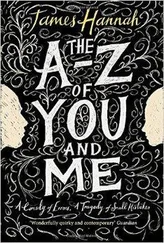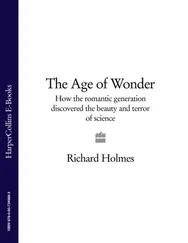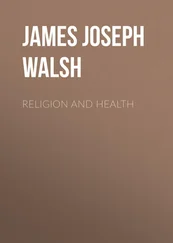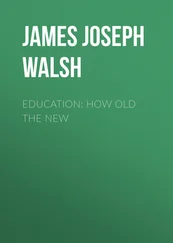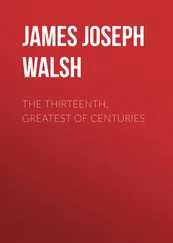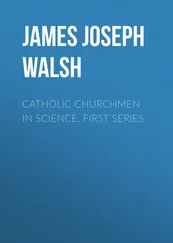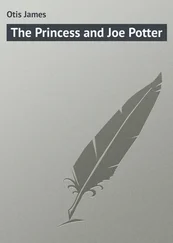James Walsh - The Popes and Science
Здесь есть возможность читать онлайн «James Walsh - The Popes and Science» — ознакомительный отрывок электронной книги совершенно бесплатно, а после прочтения отрывка купить полную версию. В некоторых случаях можно слушать аудио, скачать через торрент в формате fb2 и присутствует краткое содержание. Жанр: foreign_prose, foreign_religion, foreign_antique, на английском языке. Описание произведения, (предисловие) а так же отзывы посетителей доступны на портале библиотеки ЛибКат.
- Название:The Popes and Science
- Автор:
- Жанр:
- Год:неизвестен
- ISBN:нет данных
- Рейтинг книги:4 / 5. Голосов: 1
-
Избранное:Добавить в избранное
- Отзывы:
-
Ваша оценка:
- 80
- 1
- 2
- 3
- 4
- 5
The Popes and Science: краткое содержание, описание и аннотация
Предлагаем к чтению аннотацию, описание, краткое содержание или предисловие (зависит от того, что написал сам автор книги «The Popes and Science»). Если вы не нашли необходимую информацию о книге — напишите в комментариях, мы постараемся отыскать её.
The Popes and Science — читать онлайн ознакомительный отрывок
Ниже представлен текст книги, разбитый по страницам. Система сохранения места последней прочитанной страницы, позволяет с удобством читать онлайн бесплатно книгу «The Popes and Science», без необходимости каждый раз заново искать на чём Вы остановились. Поставьте закладку, и сможете в любой момент перейти на страницу, на которой закончили чтение.
Интервал:
Закладка:
For President White, then, the publication of the text of the bull is only an endeavor to show that, so far from forbidding dissection, it had quite a different tenor. This endeavor seems to him very disingenuous(!) It matters not what evidence there may be for dissection, or lack of evidence as to ecclesiastical opposition, the decretal of Boniface was construed universally as prohibiting any dissections for any purpose whatever. All history must yield before the reiteration of the assertion that the Popes did forbid dissection, and that there was no anatomy during the thirteenth, fourteenth and fifteenth centuries, except such as by chance, in some way or other, succeeded in evading the Church regulations. It simply must have been so. President White has said it. For anyone to deny it is to question his historical infallibility. Only those who are disingenuous will dare to do so.
It is true, he grants there were some permits to dissect given, but these were wrung from the unwilling hands of the ecclesiastical authorities, and are only proofs of their opposition, not at all of their toleration of dissection. There is no limit to which Professor White will not go in order to maintain his proposition that the Popes did forbid anatomy, and that there was no anatomical investigation during the thirteenth, fourteenth and fifteenth centuries. Here, for instance, is a paragraph from Professor White's answer which shows very strikingly one method of arguing with regard to a question of major significance in the history of education as well as of science, and especially of medicine, during the Middle Ages. Comments on it are entirely unnecessary:
"And now, as to Dr. Walsh's statement that dissection was permitted by Popes and ecclesiastical authorities in universities. His argument in the matter is an excellent example of Jesuitism. It is true that under the pressure of the developing science of medicine, sundry civil and ecclesiastical authorities did, from time to time, issue permits allowing an occasional dissection, at rare intervals, here and there; as, for example, the permission given to the University of Lerida, in 1391, to dissect one dead criminal every three years, and to sundry other universities to dissect one or two human bodies each year. It is a fact of which we have ample testimony, that Mundinus, the great anatomist preceding Vesalius, only dissected three human bodies with his classes during his entire career. So far from effectually helping anatomy, these permissions served really to fasten the idea upon the European mind that dissection to any considerable extent by anatomical investigators ought not to be allowed, and, as a matter of fact, it was not until Vesalius, in spite of theological opposition, braved calumny, persecution, and possibly death, that this ecclesiastical barrier to investigation was broken through. " (Italics ours.)
Since Professor White has insisted so much on the significance of these permissions, a discussion of them will not be out of place. There are records of a certain small number of permissions to dissect having been granted by the Popes to various universities during the fourteenth and fifteenth centuries. These are so few, however, that it would seem that if they represented the only opportunities afforded for dissection, then the development of anatomy must have been much hampered.
With regard to this, it may be said that if the Popes gave permission for dissection, then this practice was not forbidden by them. Here is the proof of it out of the mouths of those who say the opposite. Why should a permission be necessary, however, will be asked?
At the present moment such formal permissions are required quite as much in all civilized countries as they were during the Middle Ages. In certain parts of the United States a bond has to be filed by applicants before permission to dissect will be given. Dissection is recognized generally as a practice that needs definite regulation. Without such regulation all sorts of abuses would creep in. During the Middle Ages popular feeling was all against dissection. It was difficult, in many places, for the university authorities to obtain permission for dissection from their immediate political rulers. As a consequence of this they reverted to the theory, very generally accepted at that time, that the university was independent of the political authorities of the place in which it was situated, in educational matters, and an appeal was made directly to the ecclesiastical authorities for permission to dissect, as coming under their jurisdiction in education. They had thus obtained many other educational privileges that would not have been allowed them by municipalities, and they were successful also in this. Anyone who knows the details of the struggle of the universities to maintain the rights of their students and faculties against the encroachments of municipal and state authorities, will appreciate how much this possibility of appeal to the Pope meant for the universities of that time.
The permission to dissect was only another, but a very striking example, of ecclesiastical authority granting privileges to universities beyond those which they could have obtained from the local governments under which they existed. Such permissions, far from showing that the Popes were hampering or prohibiting dissection, prove, on the contrary, that they were securing for educational institutions what local popular prejudice would not have allowed them. That this is the proper way to view this question will be best appreciated by a review of the history of anatomy during the two centuries and a half in which ecclesiastical authorities are said to have prevented or discouraged its development. From this it will be seen very clearly that the nearer to Rome the medical schools were, the more dissection was done in them; that dissection was most common in Rome, at least during the latter part of this period; that the golden age of anatomy developed most luxuriantly in Bologna when that was a Papal city, and in Rome itself; and that in general the Popes must be looked upon as having fostered and patronized the medical sciences and anatomy in every possible way, while there is not the slightest hint anywhere to be found of the ecclesiastical opposition that is supposed to have dominated these centuries of medical history.
In concluding this chapter it has seemed worth while to trace the origin of the misinterpretation of Pope Boniface's decretal, which makes it forbid dissection for anatomical purposes as well as the cutting up and boiling of bodies in order to facilitate their removal for long distances for burial. Prof. White quotes with great confidence in the matter the Benedictine Literary History of France as his authority, which he declares to be a Catholic authority. Under ordinary circumstances, this would be quite sufficient to establish the fact that such a misinterpretation must have taken place, for the Benedictines were extremely careful in such matters and were not likely to admit an assertion of this kind, unless they had good foundation for it. The quotation on which Prof. White depends for his declarations in the matter is found in the Sixteenth Volume of the Histoire Litteraire de la France, which runs as follows:
"But what was to retard still more (than the prohibition of surgery to the clergy mentioned in the preceding paragraph) was the very ancient prejudice which opposed anatomical dissection as sacrilegious. By a decree inserted in Le Sexte, Boniface VIII. forbade the boiling of bodies in order to obtain skeletons. Anatomists were obliged to go back to Galen for information, and could not study the human body directly, and consequently could not advance the human science of bodily health and therapeutics."
Had this been written by the Benedictines, there would have been every reason to think that though Boniface's decretal itself did not forbid dissection it had unfortunately been so misinterpreted. While the Histoire Litteraire de la France, however, was begun by the Benedictine Congregation of St. Maur, their work, like many another magnificent undertaking of the monks, was interrupted by the French Revolution. What they had accomplished up to this time showed the necessity for such work, and accordingly in the early part of the nineteenth century a continuation of it was undertaken by the members of the Institute of France. The Sixteenth Volume from which the quotation just cited comes was mainly written by Pierre Claude François Daunou, the French historian and politician. His life had not been such as to make him a sympathetic student of the Middle Ages. He had been a deputy to the Convention, 1792-1795, was elected the first President of the Council of 500 in this latter year, and became a member of the Tribunate in 1800. His contributions to history were made near the close of his life. While he is usually considered an authority in the political details of these centuries, it is easy to understand that he was not favorably situated for familiarity with the medical history of these times.
Читать дальшеИнтервал:
Закладка:
Похожие книги на «The Popes and Science»
Представляем Вашему вниманию похожие книги на «The Popes and Science» списком для выбора. Мы отобрали схожую по названию и смыслу литературу в надежде предоставить читателям больше вариантов отыскать новые, интересные, ещё непрочитанные произведения.
Обсуждение, отзывы о книге «The Popes and Science» и просто собственные мнения читателей. Оставьте ваши комментарии, напишите, что Вы думаете о произведении, его смысле или главных героях. Укажите что конкретно понравилось, а что нет, и почему Вы так считаете.
